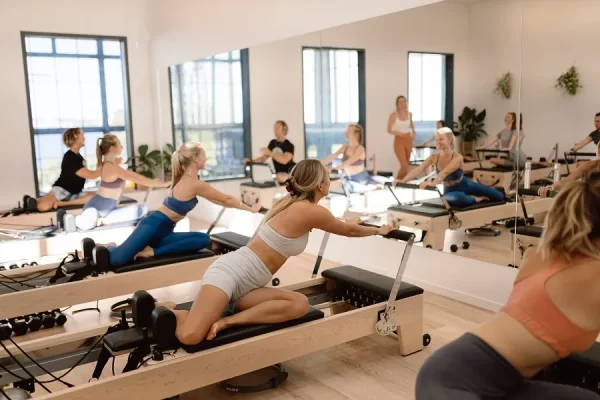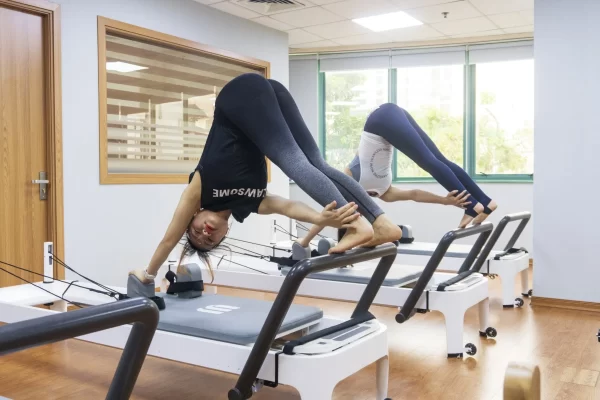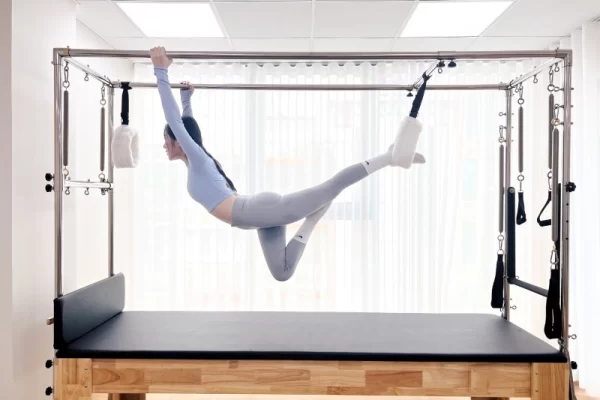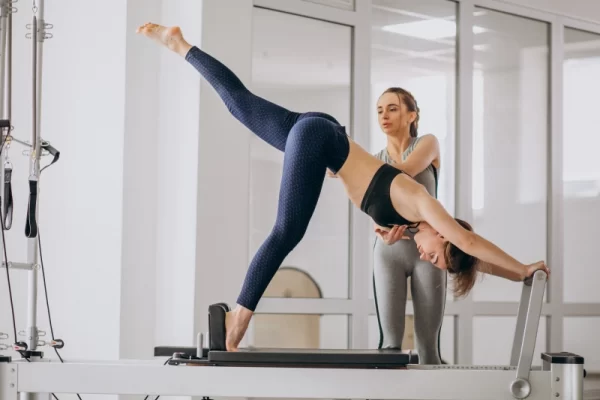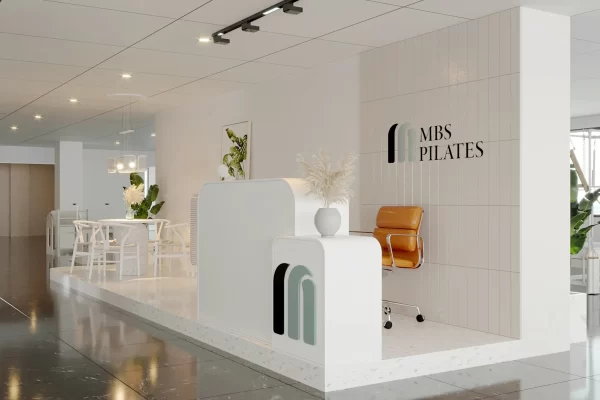What Is Wall Pilates? Top 8 Simple Wall Pilates Exercises for Beginners
20/11/2025Pilates with a wall is an excellent choice for anyone looking to improve overall health without needing a gym or complex equipment. With just a wall for support, you can perform Pilates movements safely, effectively, and with greater control. This method helps strengthen muscles, increase flexibility, and enhance balance. Whether you are a beginner or already experienced, Wall Pilates is easy to start and ideal for practicing at home.
What Is Wall Pilates? Benefits of Practicing Pilates With a Wall
Wall Pilates is a variation of traditional mat Pilates that uses the wall as a support point to assist or increase the difficulty of each movement.

Wall Pilates, also known as Pilates with a wall.
Wall Pilates, also known as Pilates with a wall, enhances traditional exercises by adding resistance and stability through wall contact.
Key benefits of Wall Pilates:
- Increase exercise intensity: The wall adds resistance, helping build muscular strength and endurance.
- Improve stability and balance: Practicing with the wall helps you control your body more effectively.
- Enhance flexibility: Wall Pilates stretches muscles and expands your range of motion.
- Safe and low-impact: Suitable for all ages and fitness levels, including beginners or those recovering from injury.
- Convenient: You can practice anywhere as long as you have a clear space and a wall
Wall Pilates is a great way to work out at home using only a mat and a nearby wall. In this variation, you press your arms, legs, back, or hips against the wall to perform movements like squats or planks, using the wall and your body weight to increase resistance. With slow, controlled movements, Wall Pilates enhances flexibility, balance, and overall stability.
Top 8 Simple Wall Pilates Exercises
Below are the top 8 beginner-friendly Wall Pilates exercises. Each movement includes clear step-by-step instructions to help you maintain proper form.
1. Single-Leg Knee Crunch
This Wall Pilates exercise targets the core and improves spinal stability.
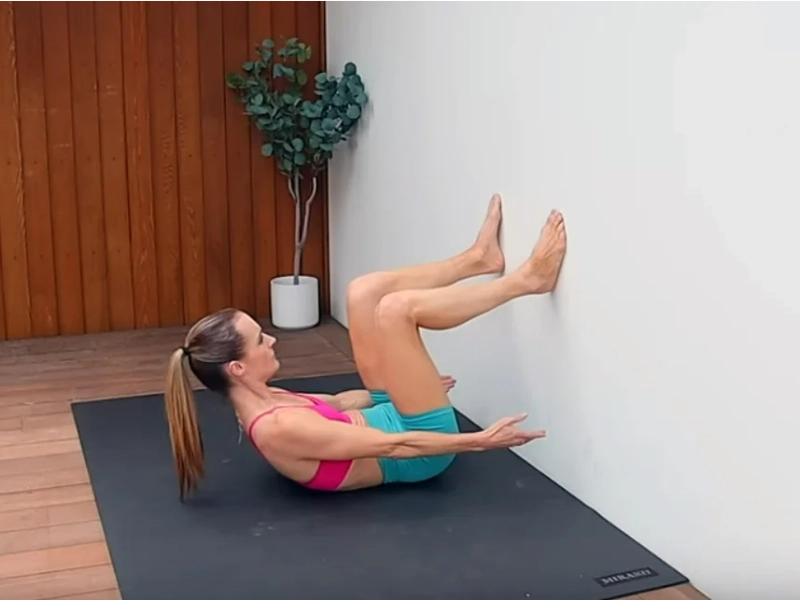
Single Leg Knee Crunch Exercise.
How to perform:
- Sit one step away from the wall, then lie on your back. Place both feet flat on the wall as if resting on a tabletop.
- Extend your left leg diagonally with toes hovering against the wall. Stretch your arms overhead and press your lower back into the floor to engage the core.
- Draw your left knee toward your chest while lifting your shoulders off the floor. Sweep your arms toward the wall beside your hips.
- Release back to the starting position. Repeat 15 times, then switch legs.
2. Wall Roll Down
This Wall Pilates exercise strengthens the core, especially the abdominals and lower back.
How to perform:
- Stand with your back against the wall, feet hip-width apart and one fist-length away from the wall.
- Lengthen your spine and engage your core.
- Slowly roll down the wall, articulating through each vertebra.
- Continue until your body reaches a comfortable stretch, keeping knees straight.
- Inhale, then exhale to roll back up the wall. Repeat 8-10 times.
3. Wall Bridge and Calf Raise
This variation intensifies the classic glute bridge, strengthening the glutes and core.
How to perform:
- Sit one step from the wall and lie on your back. Place both feet flat on the wall.
- Press your feet firmly into the wall to activate the glutes and hamstrings while lifting your hips off the floor.
- Once your body forms a straight line from shoulders to knees, lift your heels off the wall to balance and raise the calves.
- Lower the heels and then the hips. Perform 15 repetitions.
4. Wall Squat
This Wall Pilates squat tones and strengthens the quads, hamstrings, glutes, and calves while improving lower-body stability and balance.
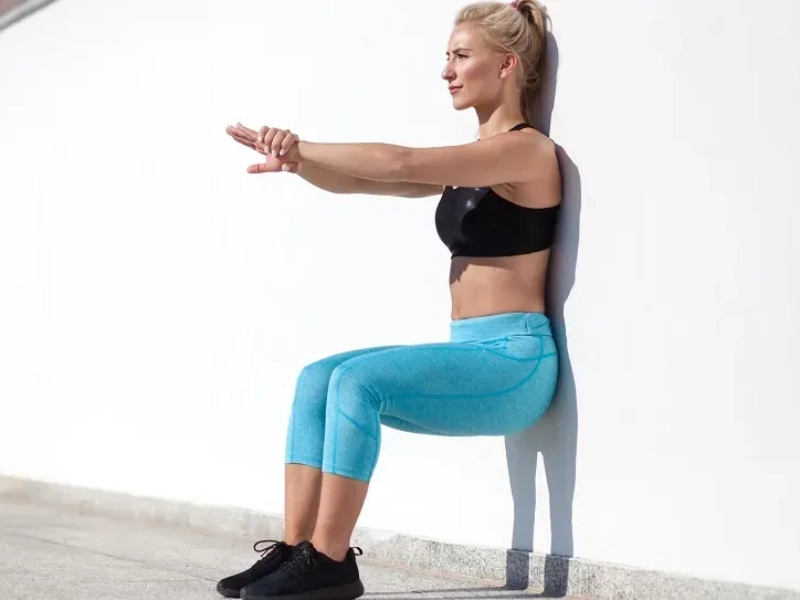
Wall Squat Exercise.
How to perform:
- Stand with your back against the wall, feet hip-width apart and one step forward.
- Slowly slide your back down the wall, bending your knees to 90 degrees and lowering into a squat. Keep knees aligned with ankles and not past the toes.
- Aim to keep your thighs parallel to the floor while maintaining wall contact.
- Hold for 30-60 seconds.
- Repeat 8-10 times, or challenge yourself by extending one leg at a time.
5. Reach Backs
This Wall Pilates movement strengthens the core and back muscles.
How to perform:
- Begin in a high plank with feet pressing into the wall, hip-width apart. Shoulders stacked directly over wrists.
- Lift your hips into Downward Dog and reach your right hand back to touch your left foot, ankle, or shin.
- Shift your hips forward and return your right hand to the floor to re-enter plank.
- Repeat on the left side, reaching toward the right ankle.
- Perform 10 repetitions per side.
6. Marching Bridge
This Wall Pilates bridge variation challenges core stability while strengthening the glutes and hamstrings.
How to perform:
- Sit one step from the wall and lie on your back. Place feet flat on the wall in a tabletop position.
- Press into the wall and lift your hips, forming a straight line from shoulders to knees. Keeping hips stable, lift your left foot off the wall and draw your knee toward your chest. Return the left foot and repeat with the right side.
- Perform 10 repetitions per leg.
7. Wall Sit and Calf Rais
This exercise enhances stability and balance while strengthening the calves and upper-body engagement.
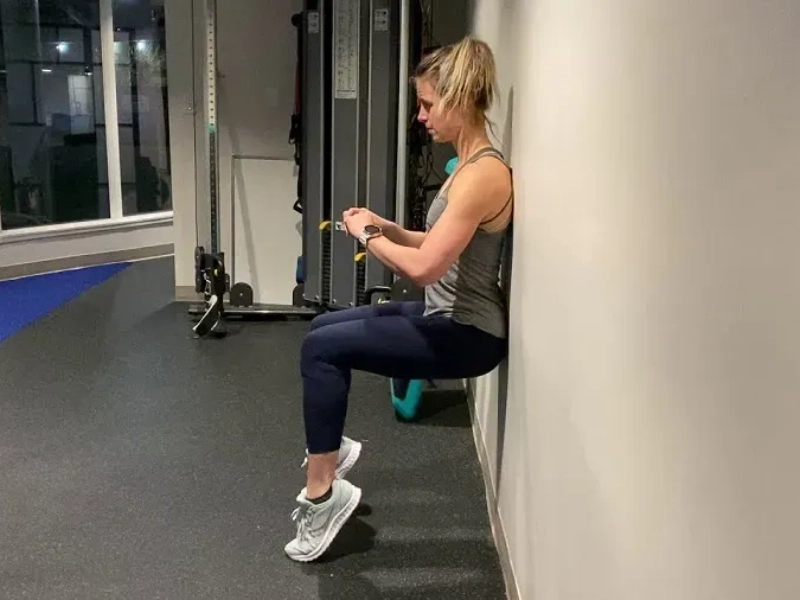
Wall Sit and Calf Raise Exercise.
How to perform:
- Stand with your back to the wall. Step forward 30-40 cm, then lower into a wall sit with back pressed against the wall and knees bent to 90 degrees. Keep feet together.
- Extend your arms forward at shoulder height, palms facing each other. Maintain the wall sit and raise your arms upward until they touch the wall near your ears. Lower the arms, then lift your heels off the floor to raise the calves. Lower the heels.
- Repeat 15 times.
8. Hundred
This classic Pilates exercise builds core strength and endurance, enhanced with wall support. How to perform:
- Lie on your back with knees and hips at a 90-degree angle, similar to a wall squat position. Lift your head, shoulders, and upper back off the floor, engaging the abs. Extend fingertips toward your feet and pulse your arms while breathing rapidly.
- For variation, adjust knee angles or perform a wall-assisted glute bridge before starting the Hundred.
Important Notes When Practicing Wall Pilates at Home
Although designed for home workouts, some Wall Pilates movements may be challenging for beginners. Without proper guidance, incorrect technique can lead to muscle strain or injury. Wall Pilates includes a variety of exercises from basic to advanced.
It’s important to choose movements that match your fitness level and progress gradually. For optimal safety and effectiveness, consider attending beginner Pilates classes for detailed guidance.
Wall Pilates is a wonderful training method that offers multiple benefits. With the exercises explained in this article, you can easily practice Pilates at home. Always warm up well, follow proper form, and listen to your body to avoid injuries. Wishing you success on your journey toward better health and fitness!

